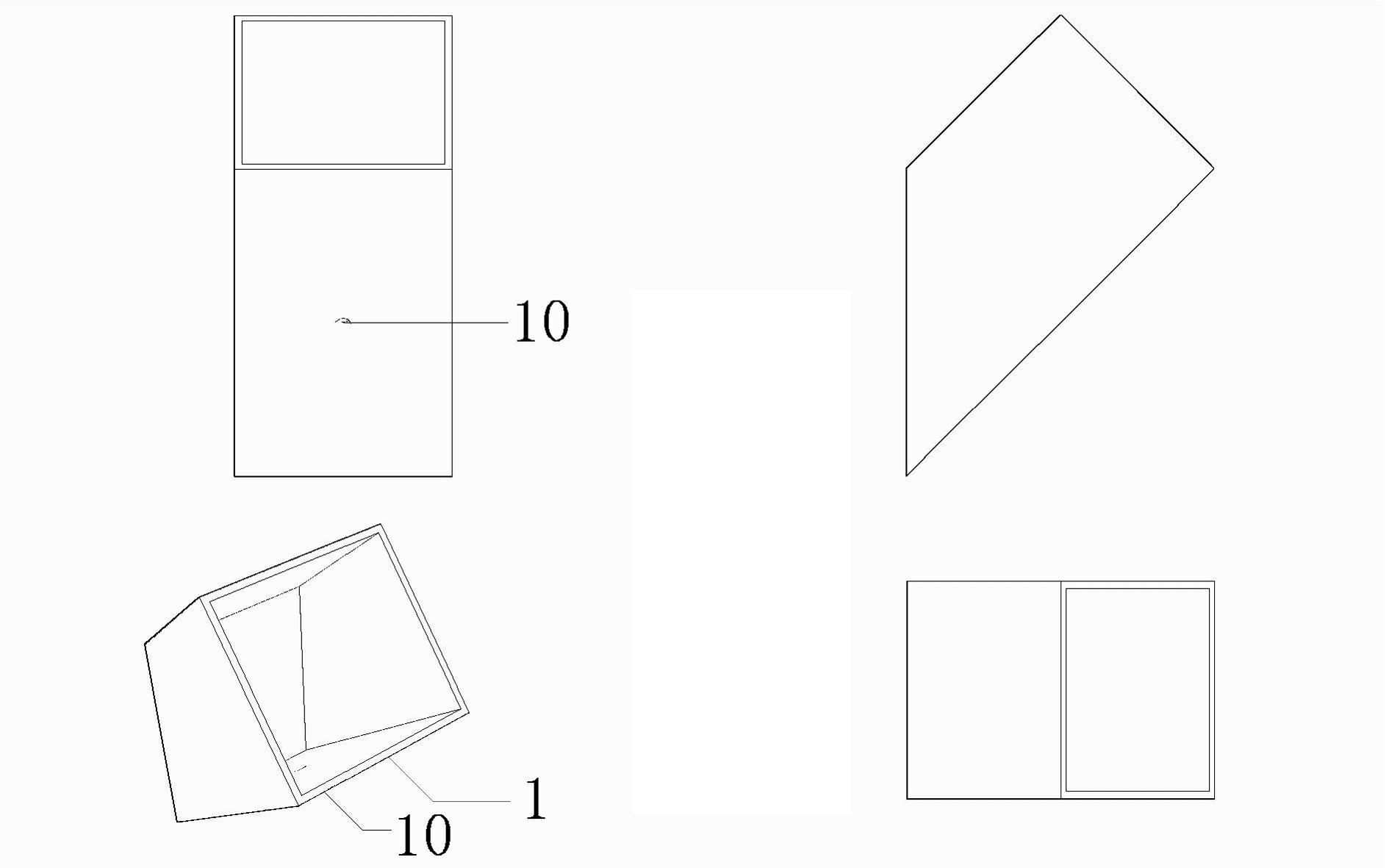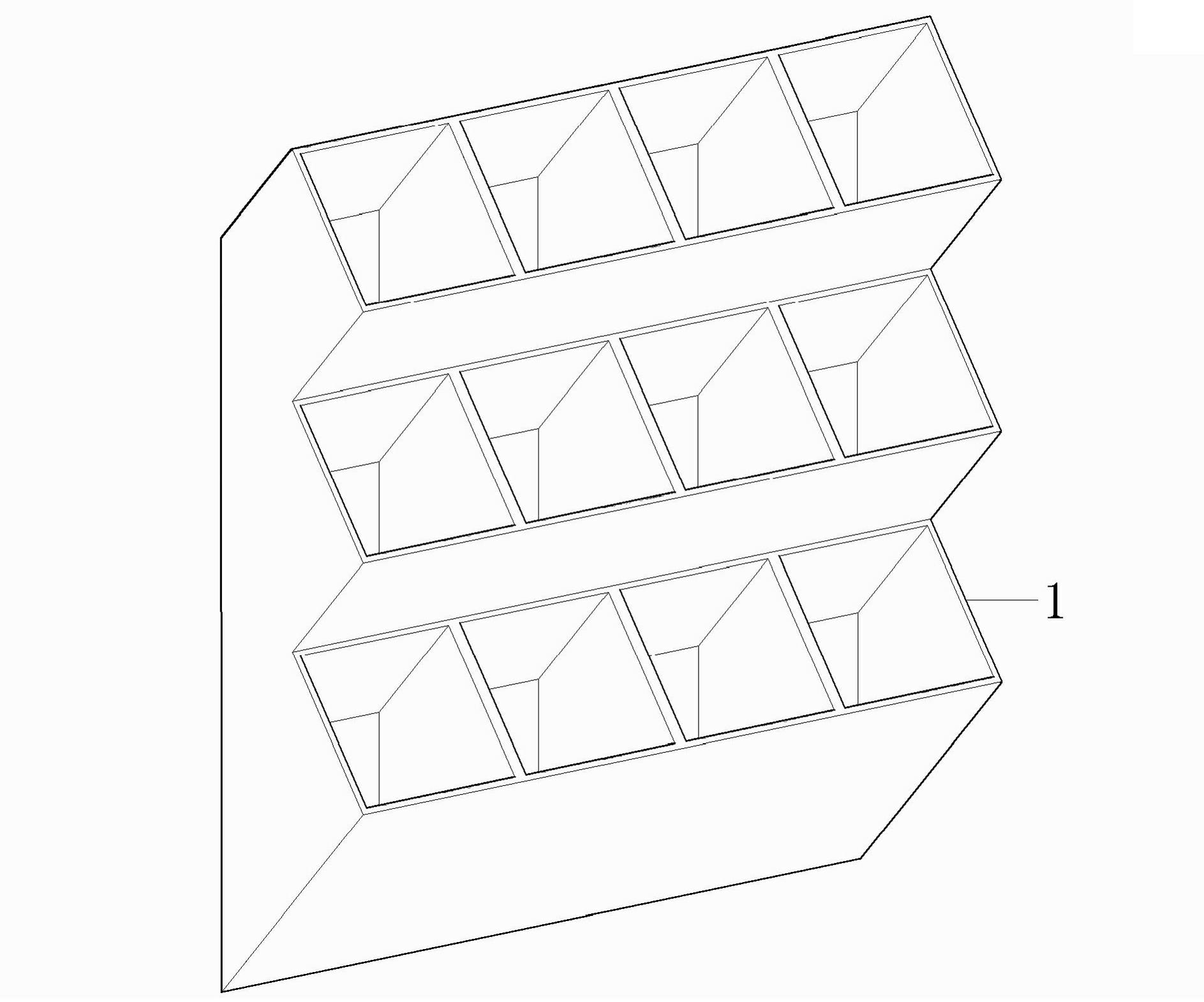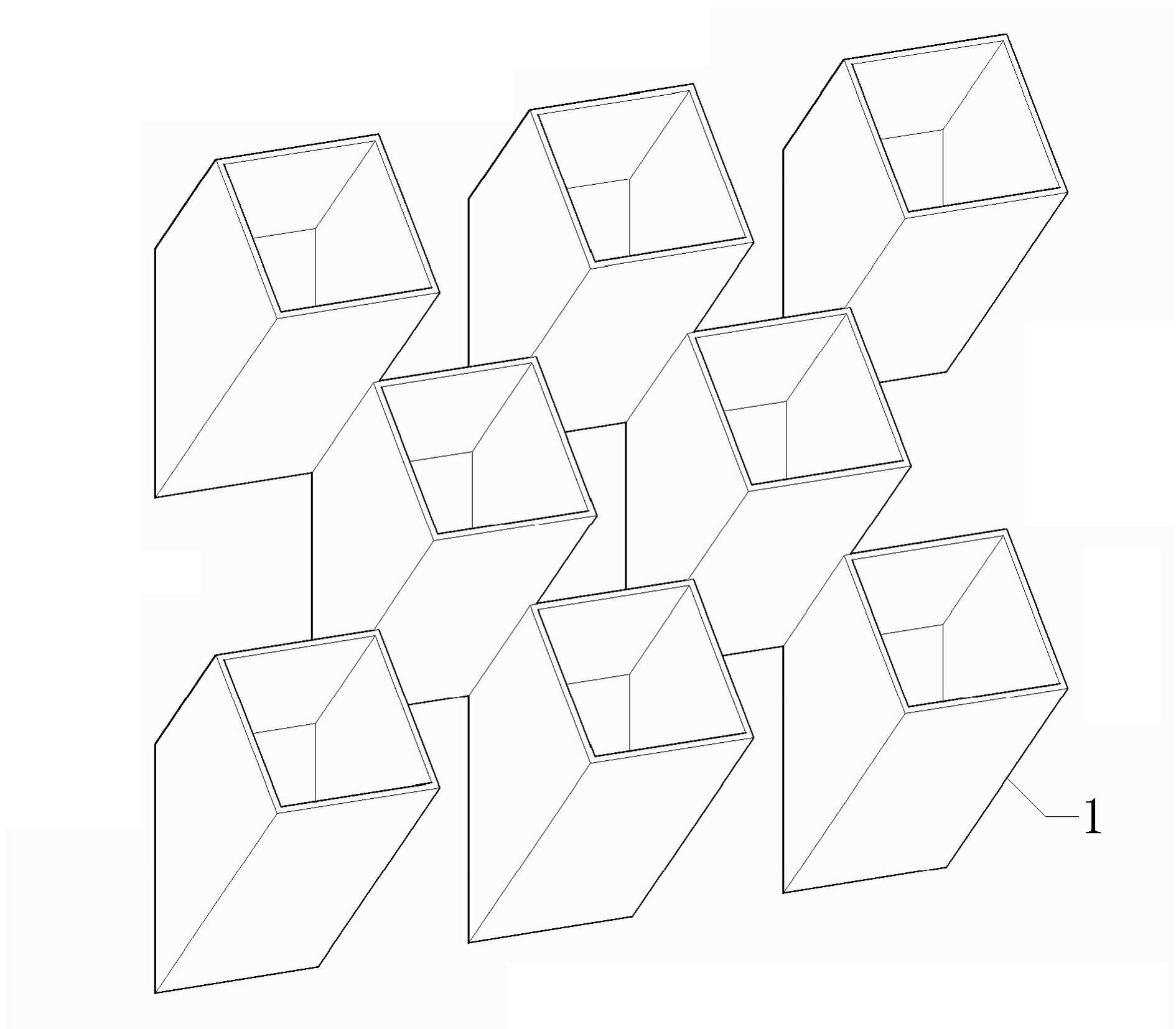Cultivation container with stacked structure
A technology of cultivation container and layered structure, applied in the field of layered structure cultivation container, can solve the problems of inability to realize three-dimensional cultivation, poor ventilation, inconvenient management, etc., and achieve the effects of saving land, relieving the pressure of urban environment, and improving environmental quality.
- Summary
- Abstract
- Description
- Claims
- Application Information
AI Technical Summary
Problems solved by technology
Method used
Image
Examples
Embodiment 1
[0035] figure 1 As shown, the shell cultivation container 1 with a single-side opening is a single-side open shell container with a polyhedron shape formed by the union of a cube and a right triangular prism, and it can also be any other geometric shape with an opening on one side / place Unclosed shell containers. figure 1 As shown in the front view, the horizontal angle of the opening direction of the shell cultivation container 1 with one side opening is 45°, and it can also be any angle greater than 0° and less than 90°. The bottom angle of the shell container is determined according to the horizontal angle of the opening direction and the bottom surface angle formed by the shell container 1 in the cultivation assembly.
[0036] The shell cultivation container 1 with one side opening can selectively set one or several 3-30mm overflow or ventilation holes 10 on the side or bottom of the opening according to the different requirements of the cultivation substrate (soil cult...
Embodiment 2
[0041] Figure 5 As shown, the shell cultivation container 2 with openings on both sides is a single-sided opening shell cultivation container monomer of two cube shapes, which can be integrated into two shell cultivation containers with different opening directions by merging, or it can be two other geometric monomers of arbitrary shape and combined into a whole. The integrated body can be integrated by monomers of the same shape and size, or by monomers of different shapes and sizes. Figure 5 As shown, the horizontal angle of the opening directions of the two monomers is 45°, or any angle greater than 0° and less than 90°; the horizontal angles of the opening directions may be perpendicular to each other in the same plane, or may not be perpendicular to each other. The merging surfaces of the two monomers constituting the integrated body can be separated from each other and relatively independent, or can be interconnected and integrated to form a shell cultivation conta...
Embodiment 3
[0047] Figure 7 As shown, the single shell cultivation container 3 of the shape of the prism is a combined editing body obtained by editing the union, intersection, and difference of the hexagonal pedestal entities, or it can be combined by several single-side open shell cultivation containers. Connected body - the first embodiment Figure 4 Example of the monomer merger in the principle described, it can also be Figure 8 Shown is the form of detachable and combined aliquot body single shell cultivation container 4.
[0048] Figure 7 A single shell cultivation container with a prism shape in the center 3, Figure 8 The detachable and combined equal body single shell cultivation container 4 can be selectively provided with one or several 3 - 30mm overflow or ventilation hole 10 ( Figure 7 shown in 10).
[0049] Figure 7 The two isosceles trapezoids shown in the front view correspond to the waists on the same side, and are inclined to be greater than 0° but less than...
PUM
 Login to View More
Login to View More Abstract
Description
Claims
Application Information
 Login to View More
Login to View More - R&D Engineer
- R&D Manager
- IP Professional
- Industry Leading Data Capabilities
- Powerful AI technology
- Patent DNA Extraction
Browse by: Latest US Patents, China's latest patents, Technical Efficacy Thesaurus, Application Domain, Technology Topic, Popular Technical Reports.
© 2024 PatSnap. All rights reserved.Legal|Privacy policy|Modern Slavery Act Transparency Statement|Sitemap|About US| Contact US: help@patsnap.com










